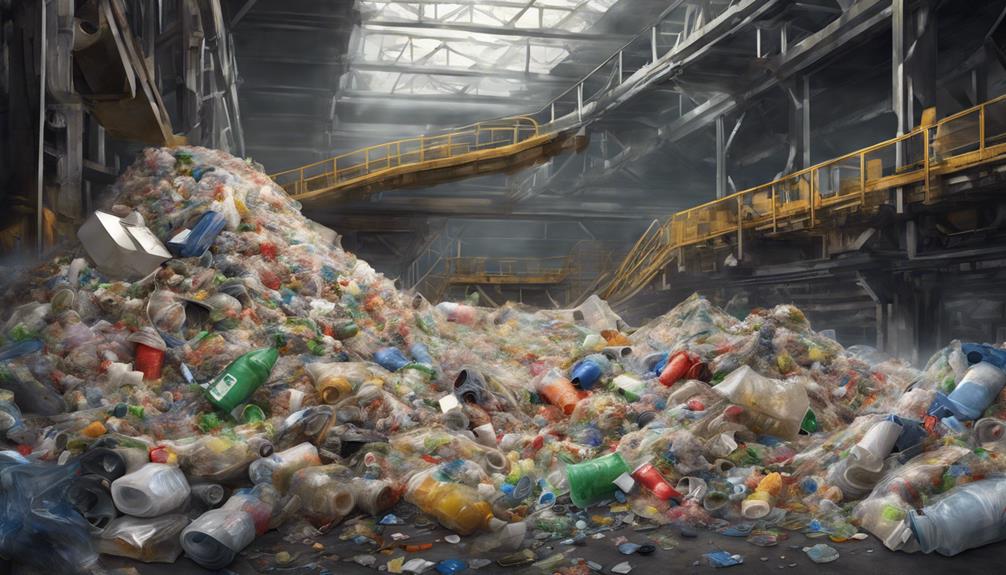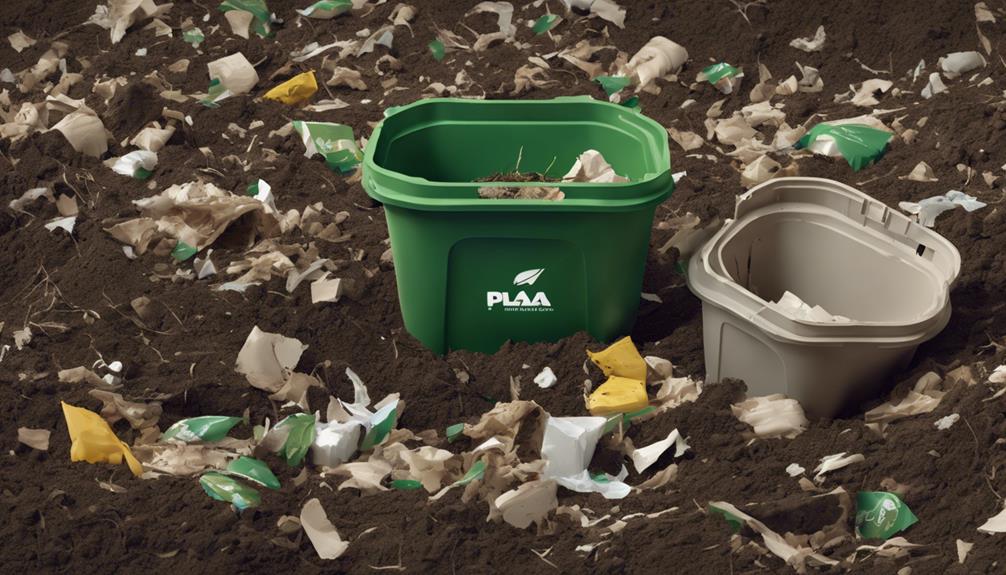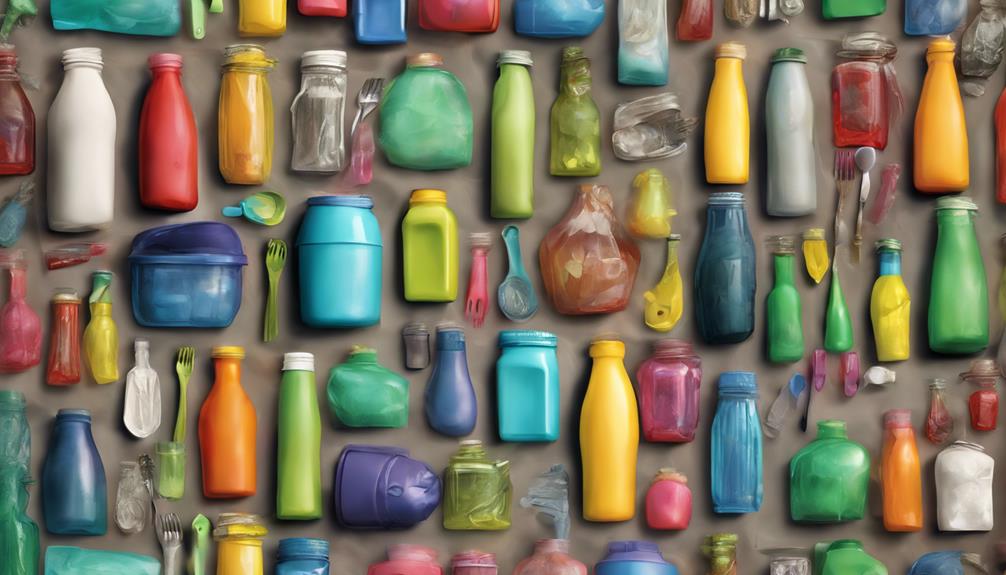You may be curious about the latest developments in sustainable practices related to PLA recycling. The innovative approach to managing bioplastic waste has garnered attention for its environmental benefits and cost-effective solutions. By exploring the possibilities of recycling PLA, you might uncover a world of opportunities that not only reduce plastic waste but also contribute to a more sustainable future.
Challenges in Recycling PLA

When it comes to recycling PLA, one of the main challenges lies in its unique properties that require specialized handling for proper processing. Due to its lower melting temperature compared to other plastics, PLA can't be recycled together with them. This means that specific recycling methods need to be utilized to guarantee the efficient recycling of PLA.
Main ways to recycle PLA include sending it to recycling plants or grinding it for new filament. By understanding the distinct characteristics of PLA and the need for specialized handling, you can contribute to the effective recycling of this bioplastic material. Proper handling and processing are essential steps towards promoting sustainability and reducing waste in the recycling of PLA.
Benefits of Recycling PLA
Considering the advantages of recycling PLA, cost savings and environmental benefits stand out as key incentives for adopting this sustainable approach. When you recycle PLA, you contribute to a more eco-friendly and cost-effective solution. Here are some benefits of recycling PLA:
- Cost Savings: Recycling PLA can lower production costs and raw material expenses.
- More Color Options: Recycled PLA can be easily colored or mixed with different pigments.
- Reduced Waste: Recycling PLA reduces the amount of plastic waste in landfills.
- Environmental Benefits: By recycling PLA, you help conserve resources and reduce the carbon footprint associated with plastic production.
Biodegradability of PLA

Recycling PLA offers significant environmental benefits, yet understanding the biodegradability of PLA remains important for exploring its long-term sustainability impact. PLA is considered non-biodegradable in traditional composting conditions, requiring industrial composting settings for degradation. Home composting is impractical due to high temperature needs.
While PLA can be composted in industrial facilities, recycling proves more environmentally sound, with a 50 times lower impact. Opting to recycle PLA rather than composting aligns better with sustainability goals. Remember, recycling PLA not only reduces waste but also contributes to a more eco-conscious approach.
Consider the long-term effects on the environment when deciding between composting and recycling PLA.
Sustainable Practices in 3D Printing
Embrace sustainable practices in 3D printing by implementing efficient waste reduction strategies. To enhance your eco-friendly approach, consider the following:
- Optimize Print Settings: Adjust settings like infill density and layer height to reduce material usage.
- Choose Support Structures Wisely: Use minimal supports or tree-like structures to minimize waste.
- Utilize Rafts or Brims: Opt for brims over rafts to reduce material waste while ensuring bed adhesion.
- Recycle Filament: Explore filament recycling options to contribute to a circular economy and reduce environmental impact.
Waste Reduction Strategies

To minimize waste during 3D printing, optimize your print settings for efficient material usage. Adjust parameters like infill density and layer height to strike a balance between strength and material consumption.
Consider using thinner walls and fewer top and bottom layers to reduce filament usage without compromising print quality. Additionally, employ features like coasting and wiping to minimize stringing and excess material deposition.
Utilize variable layer height settings to focus detailing where needed, reducing material usage in less critical areas. By fine-tuning your print settings and being mindful of material usage, you can greatly reduce waste production during 3D printing, contributing to a more sustainable approach that benefits both the environment and your printing endeavors.
Frequently Asked Questions
Can PLA Be Recycled at Home Using Common Household Items?
You can't recycle PLA at home with common items due to its specific requirements. Consider sending it to a recycling facility for proper handling. Recycling PLA guarantees sustainability and environmental benefits, contributing to waste reduction efforts.
Are There Any Health Risks Associated With Recycling Pla?
You should be aware that recycling PLA does not pose significant health risks when done correctly. Proper handling and adherence to recycling guidelines are essential to guarantee safety and environmental responsibility.
What Are the Long-Term Effects of Not Recycling Pla?
Not recycling PLA long-term results in increased waste, higher costs, and environmental harm. You should recycle to save money, reduce waste, and promote sustainability. Take action now for a greener future and long-term benefits.
Is There a Limit to the Number of Times PLA Can Be Recycled?
When you recycle PLA, think of it like a renewable cycle. Each time you recycle, the material can lose some quality, limiting its lifespan. So, although PLA can be recycled multiple times, there is a practical limit.
How Does the Recycling Process for PLA Differ From Other Plastics?
When recycling PLA, keep in mind it can't mix with other plastics due to its lower melting point. Processes like using recycling plants or grinding for new filament are common. Specific handling guarantees proper recycling.
Conclusion
You've discovered the secret to sustainable PLA recycling. Who would've thought that this bioplastic material could be transformed into a valuable resource with just a little effort?
Keep up the good work and watch as you make a difference in reducing plastic waste while saving costs. It's ironic how something so simple can have such a significant impact on our environment.
Keep recycling, and let's change the world, one PLA item at a time!